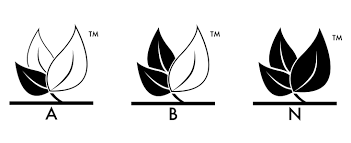Better Brakes Law
In 2010, the Legislature passed the Better Brakes Law (Chapter 70A.340 RCW). As brake pads wear down, they deposit copper and other metals onto roads, which then wash into waterways. Copper is highly toxic to salmon and other aquatic species. Brake pads account for up to half of the copper entering our waterways — 66 tons (60,000 kilograms) a year enter Puget Sound from brake pads.
This law does the following:
- Restricts the use of asbestos and several heavy metals in vehicle brake pads as of 2015.
- Phases out the use of copper in vehicle brake pads and shoes by 2025.
When this law is fully implemented, this source of copper will be virtually eliminated.
When will this law take effect?
The schedule for phasing out the metals this law restricts started in 2015. Brake pads and shoes manufactured after:
- Jan. 1, 2015, must contain 0.1% or less by weight of asbestos, hexavalent chromium, mercury, cadmium, and lead.
- Jan. 1, 2021, must contain less than 5% copper by weight.
- Jan. 1, 2025, must contain less than 0.5% copper by weight.
Brake pads manufactured before 2015 that contain copper or other regulated constituents may be sold or installed on vehicles until Jan. 1, 2025. Review the sale prohibition and exemptions for a full list of dates and allowed concentrations.
What brake pads comply with this law?
The Brake Manufacturers Council adopted the LeafMark (a three-leaf symbol) to inform customers that a brake pad meets some or all of the Better Brakes Law standards.
The darker the leaf, the more levels of compliance the pad meets:
Look for Level N of the LeafMark symbol
- Level A (one leaf) indicates levels of asbestos, cadmium, chromium, lead, and mercury are limited (2015 requirements).
- Level B (two leaves) indicates Level A and copper levels are less than 5% by weight (2021 requirements).
- Level N (three leaves) indicates all requirements are met (2025 requirements).
Brake pads that meet Level N are already available for many vehicles. When replacing the brake pads on your car or truck, we highly encourage you to ask about these low-copper products.
How can brake manufacturers comply with the law?
Brake manufacturers must certify to Ecology that their brake pads and shoes comply with the law. Manufacturers must use tests from accredited laboratories and show proof of certification on all pads and packaging offered for sale in Washington.
Some manufacturers may also apply for an exemption for brake pads 2014 or newer that they determine already meet the standards of this law.
Brake manufacturers are already reporting that they are on track to beat the target dates for implementing the Better Brakes Law. Learn more about compliance with the Better Brakes Law.
How did this law come about?
To implement this law, we reviewed current research and worked closely with brake manufacturers, retailers, distributors, and environmental groups to determine this law was feasible since brake friction materials with less than 0.5% copper are already available (read our Better Brakes Legislative Report for more information). We also worked with California because they have a similar law, the California Motor Vehicle Brake Friction Material Law.
In 2015, manufacturers signed a memorandum of agreement with the Environmental Protection Agency (EPA) and the Environmental Council of the States to adopt standards based on Washington’s and California’s brake laws. This means that every new brake pad sold in the United States will meet the standards of the Better Brakes Law.
By working together, Ecology and brake manufacturers were able to agree on an approach that protects the public and the environment. Since manufacturers sell their products globally and have relatively long product design cycles, these changes will have far reaching benefits.
Frequently asked questions
Related links
Contact information
Kathleen Gilligan
Safer Products Compliance Specialist
kathleen.gilligan@ecy.wa.gov
360-764-0594


